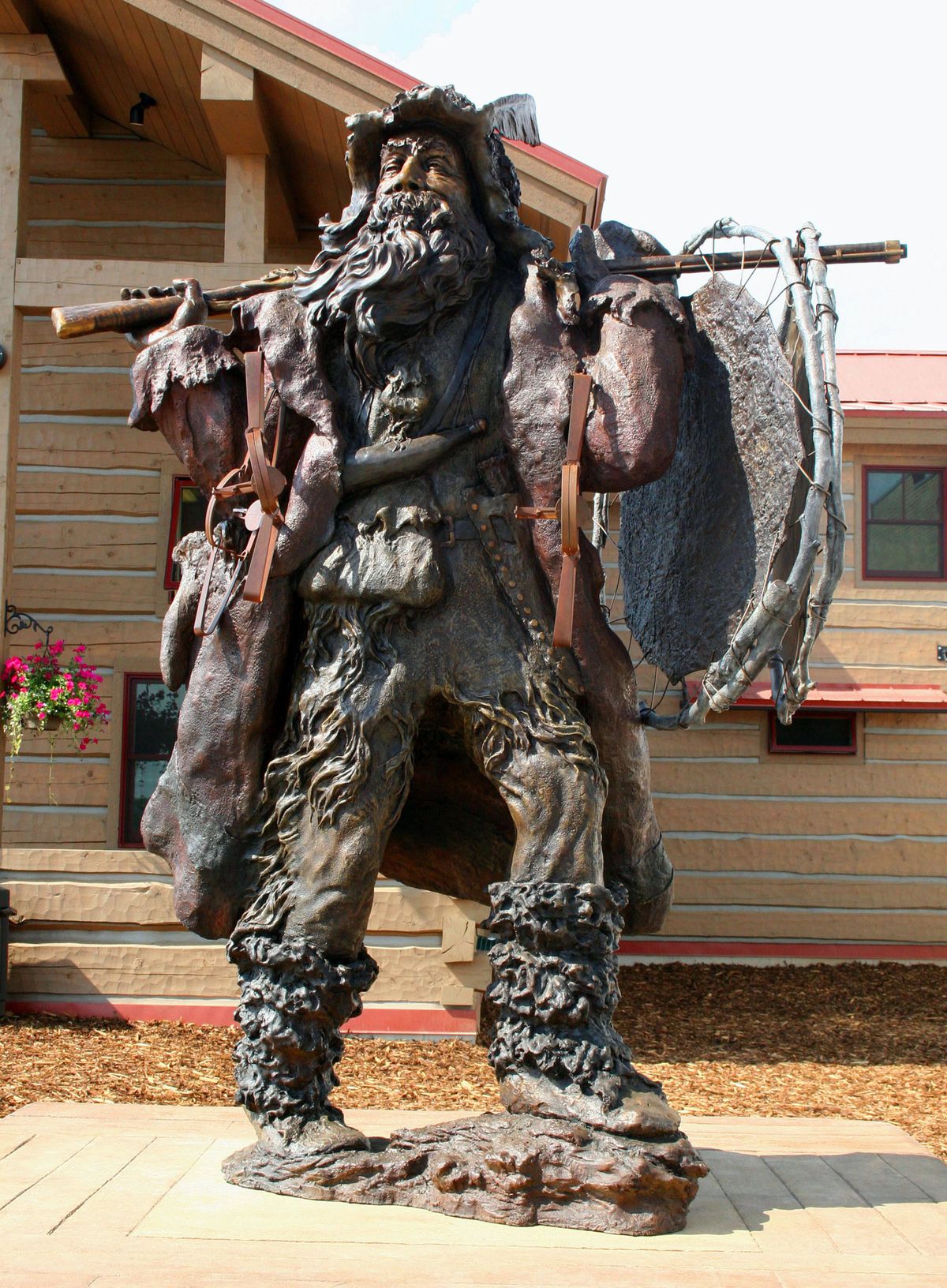The art of the Valley
Nonprofit council donating city’s first public piece of artwork

People who make disparaging remarks about lack of culture in Spokane Valley may not have heard of the Spokane Valley Arts Council.
Soon, though, the group will mark its place in the community with the city government’s first piece of public art.
The arts council – formed about the same time as the 6-year-old city – on Friday will place an 8 1/2-foot bronze sculpture of a mountain man in Mirabeau Point Park. It will be located just northwest of the intersection of Mirabeau Parkway and Mansfield Avenue, south of the CenterPlace Regional Event Center.
The unveiling represents the council’s first major project other than the annual Artist Showcase auction that made the donation possible. Council members won’t have time for a breather after placing the statue; the next auction will be Sept. 12 at CenterPlace.
“We live for that one day,” said Fritz Bachmeyr, a Spokane painter in the “old masters” style and one of the council’s 13 directors. “We don’t have the funding that other arts councils have,” he said. “We live and die by what we do. And, that said, we do a lot.”
Many arts councils are government sponsored, but the Spokane Valley Arts Commission is an independent, nonprofit corporation.
Council President James Harken said the group didn’t want to depend on government funding because “the first time something goes wrong with the finances, the arts department is the first to get cut.”
Also, despite its name, the Spokane Valley Arts Council isn’t limited to promoting the arts within city limits. Membership isn’t limited to Spokane Valley residents.
“We’re open to all communities,” said Bachmeyr, who lives on Spokane’s South Hill. “We’re basically promoting the arts wherever we can.”
He said the council’s board is a mix of artists, businesspeople and other supporters of the arts.
Board member Denise Bowles, who paints and sculpts in mixed media, said she wants to see “more of a sense of community” among Spokane Valley artists.
“I live in the Valley, and there’s a lot of artists who live out here and love the Valley for its beauty,” she said. “I just think we need to expose what we have. There needs to be more spaces to show our work and have it out for the average person to see.”
She has organized public tours of artists’ studios, and is in charge of rotating art displays at CenterPlace and the Spokane Valley Library.
Harken said the council eventually hopes to offer art lessons.
He said the council’s Artist Showcase auction has been a successful fundraiser, thanks in part to its goal of giving the city a statue.
“I thought we needed a reason for this organization to make money,” Harken said.
Still, he said, the project was made possible by the bargain price Colville artist Jerry McKellar offered on his “Working the Line” sculpture.
Harken declined to say how much the council paid because the piece is one of 10 copies of the work, but he said it’s worth “well over $100,000.”
“It would fetch a lot more if he was just interested in the money,” Bachmeyr said.
McKellar said he felt “deeply honored” that the council chose his work for its first public donation.
He and Harken have a long professional and personal association, including art shows Harken has conducted with McKellar as one of the exhibitors.
Aside from art, McKellar and Harken have something else in common. Both are dentists who trained at the University of Washington. McKellar quit his practice in 1994 to concentrate on his art, but Harken still works part-time.
Bachmeyr describes Harken as a “lexicon of information about Washington state artists – primarily because he probably bought a painting from every single artist.”
Although Bachmeyr has a substantial collection of his own, he said he can’t match Harken’s.
One of Harken’s pieces is a maquette, or miniature, version of “Working the Line.” The title refers to a line of traps with which mountain men would catch beavers and other fur-bearing animals.
The full-size “monument” version weighs about 1,500 pounds. It will be hoisted into place and mounted shortly before the 11 a.m. ceremony in which it will be presented.
As soon as his mountain man’s feet are planted in Mirabeau Point Park, television advertising for next month’s Artist Showcase will begin.
Harken said a key to the auction’s success is that the council asks participating artists to donate only half the sale price of their art. That encourages them to bring their best pieces instead of something that’s languished in their basements, he said.
Another enticement is that $500, $250 and $150 cash prizes are awarded to creators of the audience’s three favorite works.
The auction will feature a wide variety of art from a core group of artists as well as juried pieces from newcomers.
In addition to 65 items to be auctioned – generally without setting a minimum price – nine pieces will be offered at posted prices.
Admission costs $75 per person. Besides food and wine, ticketholders will get a $25 membership in the council and a $75 credit toward any art they buy.
The event starts at 4 p.m. in the CenterPlace Great Room, and probably will continue until 9:30 p.m., Harken said.
He said last year’s Artist Showcase drew nearly 150 people, and there’s room for 250 more.